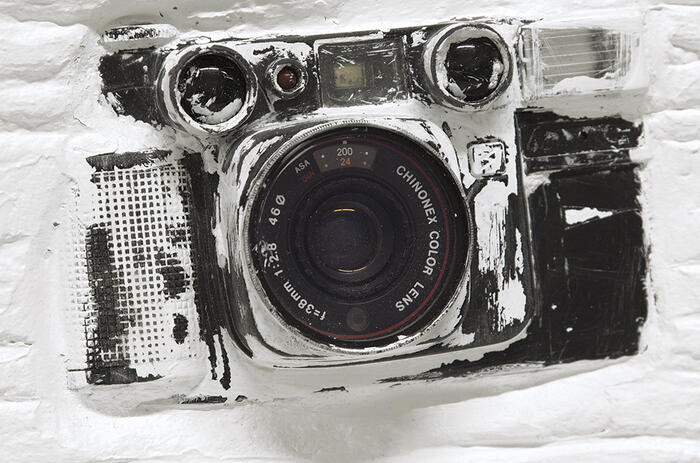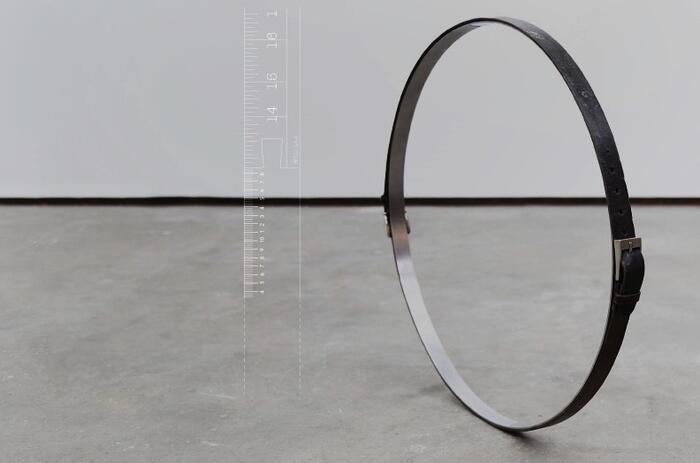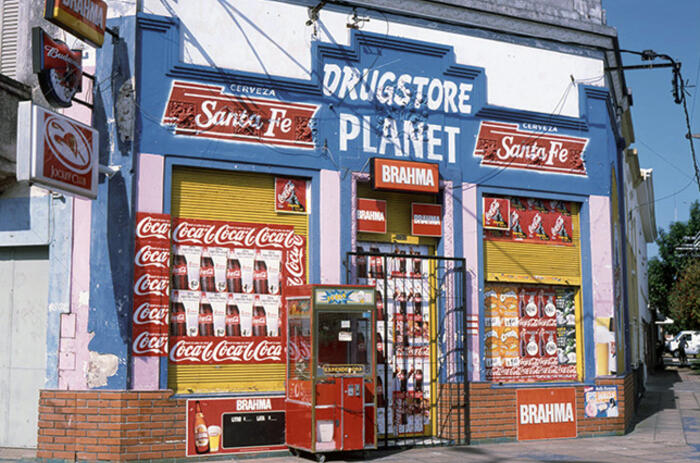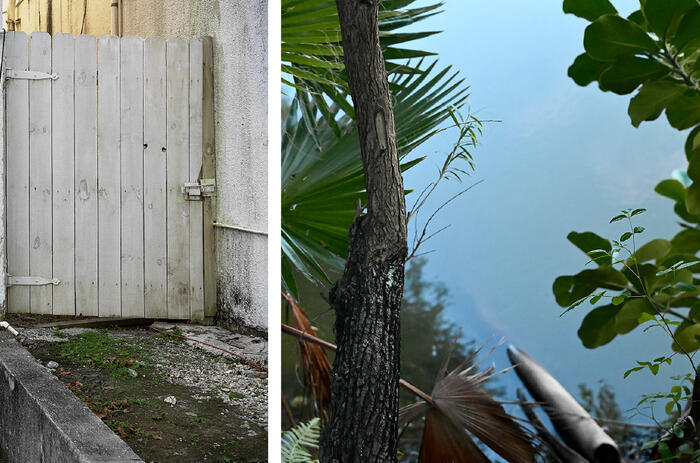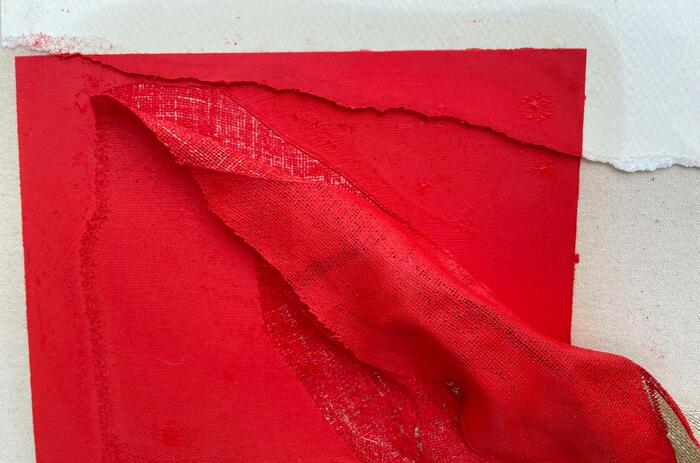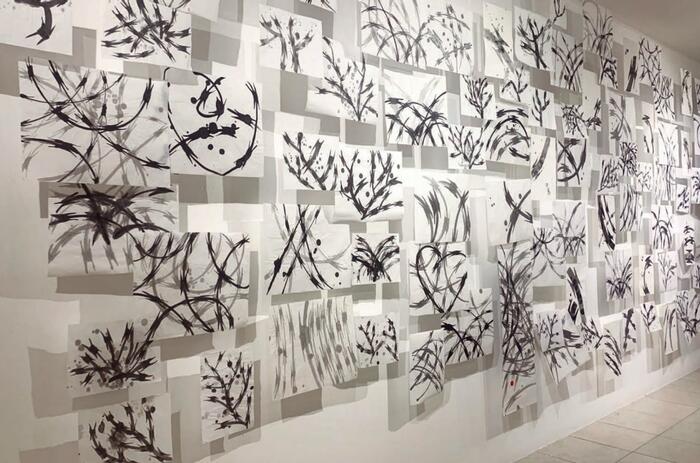RONALD MORÁN OR THE DARK FABRIC OF LOCKDOWN
Artists who have that ability to approach and distance themselves from reality have always caught my attention. Ronald Morán, (Salvadoran) is one of them; in this case, he offers us a double distancing: the distancing of a mimetic tradition that recycles reality with repeated images to the point of vertigo and, on the other hand, the distancing forced by the Covid 19 pandemic.
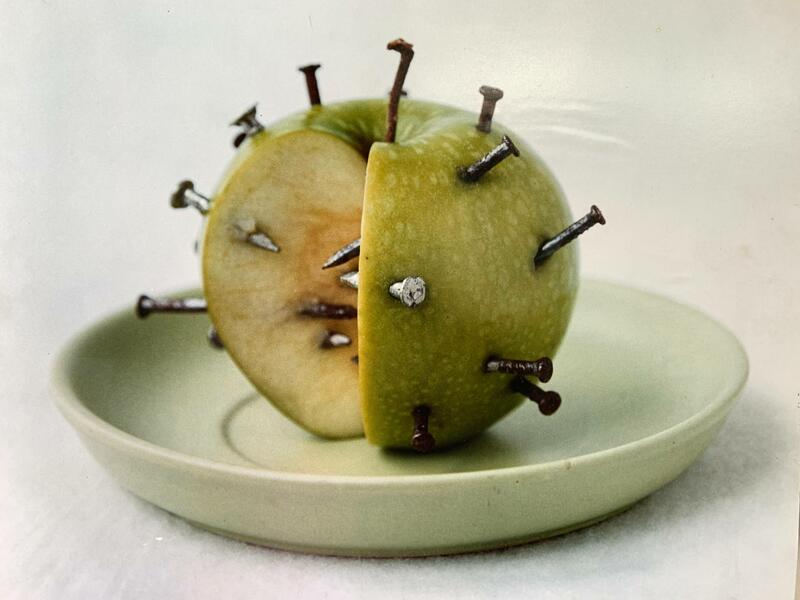
In his project “La marca de los días en un confinamiento” (The mark of days in confinement), works made in quarantine, he shows a formal density similar to those psychological layers that, as a result of routine and confinement, accumulate their weight on us; They are works that make us lose gravity, we fall like dark birds in the silence of nostalgia; plots that repeats themselves, traces that become thick as the days; strokes that when trying to escape return on themselves; atrocious daily life that dissolves the will in the same gesture; thickness in a dark light that opens and closes like life and death; movements that stop moving and return like a tired tide; lines that, wishing to be a ray, annul themselves in the void of absence, they are confined, distant lines, their presence is itheirts absence; knitting and filaments that mark the days like a memory scar: to live confined is to trace in our spirit the wound of forgetfulness and abandonment.
Morán presents us with a work-routine, a plastic ritual that, when repeated, cancels time, fading into nothingness, a chilling vision where time decapitates existence.
-
De la serie “La Marca de los días en un confinamiento”, Ronald Morán, una fina trama teje un mundo psíquico, todas estas piezas se mueven dentro de un precario estado de caos y armonía.
Ronald Morán's aesthetic distancing
The production of this series has profound modern resonances above all, with that moment in which art freed itself from mimetic representation and folded back on itself, fostering a space of self-referentiality. This autonomy is what allows Morán to distance himself from the common language with which the aesthetics of the Covid have been worked and, appropriating his own resources of visual language (lines, points, spots, grids and volumes in chiaroscuro), he ends up articulating a work absolutely novel.
The resources that others use to imitate the referents of the real world through a rigid figuration, serve Morán to build the rhetoric of his own works, in other words, the visual language is translated into the same language of the work and, although the work functions specifically for its discourse on the pandemic, by its very nature of being a sign, it has the ability to open up to other worlds. "The mark of the days" is a strange series, on the one hand, it opens a social discourse, but on the other, simultaneously, it distances itself from all exteriority, configuring itself from its own language.
Morán's work is a “structure of repetition”, a characteristic of the neo-avant-garde; the works follow one another in a sense of formal continuity. The whole of the series offers us a classic example of unity in diversity, all the works are different and, at the same time, are the same because they are linked to a formal structure that identifies them: the grid. From there, Morán carries out a series of operations related to fabric, a swarm of lines that refer to a visual imagery of succession and continuity; It is a gesture that is spun in constant repetitions and saturations that, curiously, give rise to different mutations, to different states of consciousness, to a world that moves on the limits of chaos and harmony, where precariousness and the desire to overcome constitutes a unique atmosphere.
-
Todos los ángulos remiten a un mismo estado emocional, todo queda delimitado entre líneas sin escape, su única posibilidad es la conexión, ese espacio donde todo es posible.
Between the plot and the mantra
The artist has said: “The idea is to represent saturation starting from the union of points through their displacements or movements; It is a social fabric that builds a black spot, an urban spot, densely populated like the cities of the third world; the drawing is like a mantra that calms and appeases anxiety in a convulsed and threatened world. In some drawings, symbols appear that blend into the dense linear plot, opening a more extensive discourse due to their semiotic meanings, which coexist and are an intricate part of societies”. Those symbols to which the artist refers are the cross and the heart, but they appear as opaque non-transparent referentialities, they are evoked forms, the idea of not showing anything other than the language that builds the work prevails.
-
La obra mimetiza una cruz, plegaria del desconcierto, pero visualmente tiene preeminencia el lenguaje plástico; quizá la obra busque un estado de redención ante tanta oscuridad.
Returning to the quoted text, I want to dwell on two words "Plot" and "Mantra". The plot is a warp, a set of threads that together constitute a form but, that form is in turn a mantra that is a harmonious composition, an induced state of relaxation, an antidote against the thick daily life that overwhelms us. The plot weaves, the mantra seduces.
That dense plot, which by dint of repeating the gesture obscures the object, is in correspondence with that time that is repeated to the point of boredom. In confinement, the seconds, hours and days are the same, nothing changes, time is a gangrene, a harsh stain that poisons existence. Time overwhelms, despairs, it is like a mass that crushes and oppresses; the temporality to which Covid has subjected us is an atrophying experience. The plot of these works is the presence of everything that is fading, but the artist, in the midst of this suffocating reality, builds a mantra, a soft harmony that balances the state of chaos. Plot and mantra are a dialectical state that, when fused within the work, offer a way out, a perspective that neutralizes the nightmare of confinement.
-
Una mantra suave recorre esta pieza una armonía entre líneas y puntos, un espacio que seduce en medio del desconcierto.
"The mark of the days" is a visual tattoo that leaves a memory of a bitter daily life; coming and going every day, for so many months, by the coordinates of the same space, like a rain of seconds that hammers discouragement in our flesh.
The body, a scar of anguish and torment, is there, imprisoned in those grids, wrapped in those lines, overwhelmed by those spots; the body dissolves into a spatiality that finds its meaning in repetition, a metaphor for routine.
Like a promise of hope, this routine, the crust of time, is macerated in a visual proposal, in a stamen of lines, opaque and harmonious at the same time, that parodying Huidobro, vibrates at the tip of the soul
-
Forma en proceso, es como una suave huella en desplazamiento pareciera a punto de disolverse, es como la metáfora de una espiritualidad volátil, incierta.
Ronald Morán was born in El Salvador, 1972. Graduated from the Bachelor of Fine Arts at the CENAR National Arts Center; he studied applied arts at the Dr. José Matías Delgado University, San Salvador; In addition to some artistic stays in Mexico and Spain in 2006, he was Selected by Exit magazine, Madrid, Spain as the first of the hundred most influential contemporary Latin American artists. He has represented EL Salvador in various international biennials such as: 2010, IV Beijing Biennial, Beijing, China; 2008, X Biennial of Havana, Havana, Cuba; 2007, VII Venice Biennale; 2017, Pacific Triennial, OCMA Orange County Museum of Art, California.

